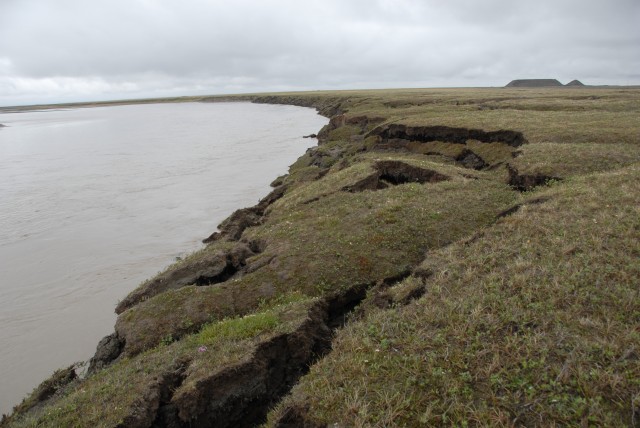
The effects of climate change are not distributed evenly—some areas have a lot more to lose. The Arctic in particular has been seeing temperatures rise roughly twice as fast as the global average. Alaskan glaciers have lost ice at a rate of roughly 42 cubic kilometers per year, Arctic sea ice has continued to decline, Alaska’s shorelines may be eroding at an accelerating rate, its permafrost is melting, and it’s suffering from forest fires at a rate greater than that of the past 10,000 years.
All of this sounds bad, but exactly how dire is it for the people of Alaska? No one wants to witness disaster, but we can determine how much damage can be negated by taking action to prepare and how much could be prevented if we manage to curtail our output of greenhouse gases. Such knowledge could help policymakers prepare for Alaska's future.
A new study tries to address these questions by estimating the amount of property damage the state will face over the next century. Taking many factors into account—flooding, precipitation, permafrost thawing, and more—the researchers behind the report quantified the damages to infrastructure, and hence the economy, that would occur under both optimistic and pessimistic climate scenarios.
Risk assessment
Other work has focused on the risks to Alaska before, with one study in particular estimating that climate-driven costs would run $7.3-14.5 billion from 2006 to 2080. That figure has been the primary guide for addressing the issue, but the authors of that prior study noted that a better estimate could be obtained with a more comprehensive review of the infrastructure in Alaska and the factors that could harm it. Now, researchers have gone on to develop new estimates for the damage to individual sectors of infrastructure such as roads, buildings, and airports. This produces a new total of $4.2 billion in damages under the optimistic model or $5.5 billion under the pessimistic one, from 2015 to 2099.
That's both a lower and a narrower range than the earlier work, although not all likely damages are included (as you'll see below).
The researchers estimate that 45 percent of the damage will come from flooding due to the increase in precipitation, while another 38 percent would be due to the thawing of permafrost. The damage varied across the state, with the interior and south-central areas (such as Fairbanks North Star, Valdez Cordova, and Yukon-Koyukuk) taking the worst of it.
Roads will be the hardest-hit, sustaining $2.4 billion in damages under the optimistic scenario ($3.1 billion in the pessimistic), mostly due to flooding. Buildings took the second-biggest chunk, $1.4-1.7 billion, depending on the scenario due to thawing permafrost. These numbers assume that if a building is damaged by the permafrost and needs to be replaced, it won’t be rebuilt on the same permafrost, or some other compensation will be made. In the past, humans haven't always been this careful.
The coast, which typically has only a few ice-free days during the course of a decade, is expected to see ice-free time increase by 80 to 90 percent by 2095 in the central and north regions (it'll only go up by 60 percent in the south). The increase in ice-free days is already driving the erosion of the shoreline, which is damaging coastal communities. However, this damage is complex and difficult to quantify financially, so the researchers left it out of their financial analysis entirely.
There was one slight benefit: continuing warming will actually reduce the damages due to freeze-thaw cycles to the infrastructure. But this benefit is insignificant compared to the losses the state is facing.
What can be done?
The difference between the optimistic and pessimistic scenarios coming to pass is dependent on how much greenhouse gases we release over time. According to the researchers’ predictions, the difference between those scenarios in damages is $1.3 billion. Avoiding these damages will require international agreements well beyond anything Alaska itself can do. So the researchers estimated how much damage could be prevented with adequate preparation done in-state.
They conclude that $2.6 billion of damage could be avoided in the pessimistic scenario ($1.9 billion optimistic), a much larger benefit from adaptation than the previous estimate. This adaptation largely came in the form of preparing roads and other infrastructure for flooding and precipitation, mainly by improving drainage.
It’s hard to protect buildings from permafrost thaw in a cost-effective way, and the researchers estimate that doing so would be more expensive than the damage. But buildings could still be made to withstand precipitation increases.
Future work may improve the estimates even further; more detailed inventory of infrastructure or a better understanding of the risk from permafrost melting would both help. More precise estimates of the exact degree of warming should also refine the estimate of the damage the state faces. And all of this should help policymakers decide how best to use their resources.
Nature, 2016. DOI: doi:10.1073/pnas.1611056113 (About DOIs)
reader comments
87